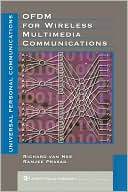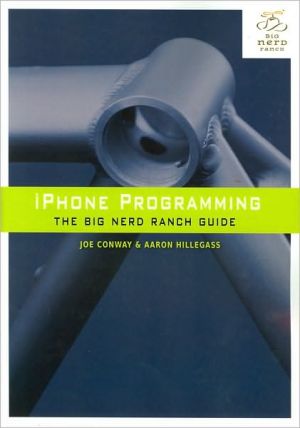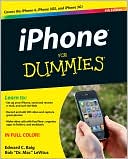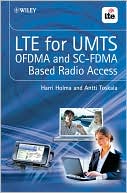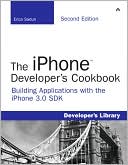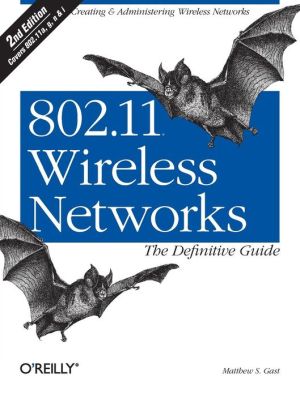Ofdm For Wireless Multimedia Communications
Search in google:
Written by leading experts in the field of wireless communications, OFDM for Wireless Multimedia Communications is a practical guide to planning, designing, and using orthogonal frequency division multiplexing (OFDM). It offers you a thorough overview of OFDM signal processing techniques, and provides a solid base for assessing the performance of wireless OFDM systems. Technical details of OFDM are provided, along with explanations of how OFDM signals are formed using the inverse fast Fourier transform, how windowing can limit out-of-band radiation, and how the cyclic extension mitigates the effects of modulation. You also learn how to assess the performance of OFDM-based systems in terms of SNR and delay-spread tolerance. OFDM for Wireless Multimedia Communications contains a valuable investigation of the applications of OFDM, including digital audio and video broadcasting and wireless ATM. Plus, it helps you understand IEEE 802.11, MMAC, and HiperLAN standards for wireless LAN. Booknews This technical guide to planning, designing and using orthogonal frequency division multiplexing (OFDM) offers a thorough overview of OFDM signal processing techniques and the basis for assessing the performance of wireless OFDM systems in terms of SNR and delay- spread tolerance. Van Nee (Lucent Technologies) and Prasad (Aalborg University) explain how OFDM signals are formed using the inverse fast Fourier transform, how windowing can limit out-of-band radiation, and how the cyclic extension mitigates the effects of modulation. The final chapter describes applications of OFDM, such as digital audio and video broadcasting and wireless ATM. Annotation c. Book News, Inc., Portland, OR (booknews.com)
PrefacexiiiAcknowledgmentsxviiChapter 1Introduction11.1Standardization and Frequency Bands41.2Multimedia Communications71.2.1The Need for High Data Rates81.2.2Services and Applications91.2.3Antennas and Batteries91.2.4Safety Considerations101.2.5ATM-Based Wireless (Mobile) Broadband Multimedia Systems121.3Multipath Propagation151.3.1Multipath Channel Models161.3.2Delay Spread Values171.4Time Variation of the Channel191.5History of OFDM201.6Preview of the Book24References25Chapter 2OFDM Basics332.1Introduction332.2Generation of Subcarriers using the IFFT332.3Guard Time and Cyclic Extension392.4Windowing422.5Choice of OFDM Parameters462.6OFDM Signal Processing472.7Implementation Complexity of OFDM Versus Single Carrier Modulation48References51Chapter 3Coding and Modulation533.1Introduction533.2Forward Error Correction Coding543.2.1Block Codes543.2.2Convolutional Codes553.2.3Concatenated Codes583.3Interleaving593.4Quadrature Amplitude Modulation603.5Coded Modulation62References70Chapter 4Synchronization734.1Introduction734.2Sensitivity to Phase Noise744.3Sensitivity to Frequency Offset774.4Sensitivity to Timing Errors784.5Synchronization using the Cyclic Extension804.6Synchronization using Special Training Symbols864.7Optimum Timing in the Presence of Multipat88References92Chapter 5Coherent and Differential Detection955.1Introduction955.2Coherent Detection955.2.1Two Dimensional Channel Estimators965.2.2One Dimensional Channel Estimators1035.2.3Special Training Symbols1045.2.4Decision Directed Channel Estimation1065.3Differential Detection1075.3.1Differential Detection in the Time Domain1075.3.2Differential Detection in the Frequency Domain1125.3.3Differential Amplitude and Phase Shift Keying115References117Chapter 6The Peak Power Problem1196.1Introduction1196.2Distribution of the Peak-to-Average Power Ratio1206.3Clipping and Peak Windowing1236.3.1Required Backoff with a Non-Ideal Power Amplifier1276.3.2Coding and Scrambling1306.4Peak Cancellation1316.5PAP Reduction Codes1386.5.1Generating Complementary Codes1416.5.2Minimum Distance of Complementary Codes1446.5.3Maximum Likelihood Decoding of Complementary Codes1456.5.4Suboptimum Decoding of Complementary Codes1476.5.5Large Code Lengths1506.6SYMBOL Scrambling150References153Chapter 7Basics of CDMA1557.1Introduction1557.2CDMA: Past, Present, and Future1567.3CDMA Concepts1577.3.1Pure CDMA1617.4Basic DS-CDMA Elements1717.4.1RAKE Receiver1717.4.2Power Control1727.4.3Soft Handover1737.4.4Interfrequency Handover1757.4.5Multiuser Detection175References176Chapter 8Multi - Carrier CDMA1798.1Introduction1798.2Channel Model1808.3DS-CDMA and MC-CDMA Systems1828.3.1DS-CDMA System1828.3.2MC-CDMA System1858.4MC-CDMA System Design1898.5BEP LOWER Bound1948.5.1DS-CDMA System1948.5.2MC-CDMA System1958.5.3BEP Lower Bound Equivalence1968.6Numerical Results1978.6.1MC-CDMA System Design1978.6.2Down - Link BEP Performance1998.6.3Up - Link BER Performance2038.7Conclusions206Appendix 8A208References209Chapter 9Orthogonal Frequency Division Multiple Access2139.1Introduction2139.2Frequency Hopping OFDMA2139.3Differences between OFDMA and MC-CDMA2159.4OFDMA System Description2179.4.1Channel Coding2209.4.2Modulation2209.4.3Time and Frequency Synchronization2219.4.4Initial Modulation Timing Synchronization2219.4.5Initial Frequency Offset Synchronization2229.4.6Synchronization Accuracy2229.4.7Power Control2239.4.8Random Frequency Hopping Operation2249.4.9Dynamic Channel Allocation (Fast DCA)2259.4.10Dynamic Channel Allocation (Simple DCA)2279.4.11Capacity of OFDMA2279.5Conclusions227References228Chapter 10Applications of OFDM22910.1Introduction22910.2Digital Audio Broadcasting22910.3Terrestrial Digital Video Broadcasting23110.4Magic WAND23310.4.1Magic WAND Physical Layer23410.4.2Coding23610.4.3Simulated Error Probabilities23610.4.4Effects of Clipping23710.4.5Magic WAND Medium Access Control Layer23810.5IEEE 802.11, HIPERLAN/2, and MMAC Wireless LAN Standards24110.5.1OFDM Parameters24310.5.2Channelization24410.5.3OFDM Signal Processing24510.5.4Training24610.5.5Differences between IEEE 802.11, HIPERLAN/2 and MMAC24910.5.6Simulation Results250References252About the Authors255Index257
